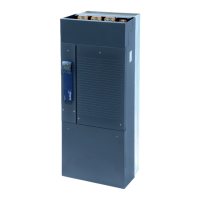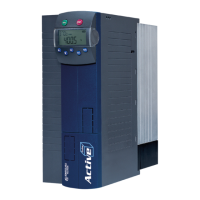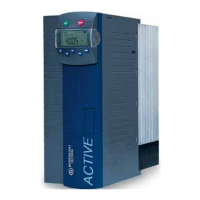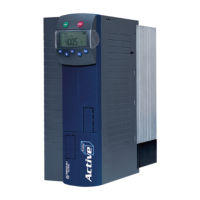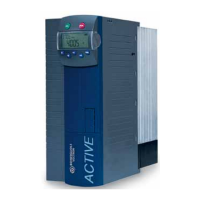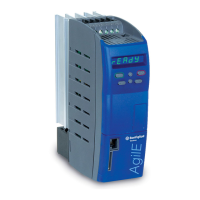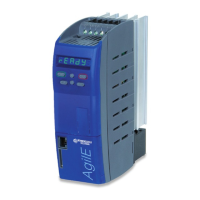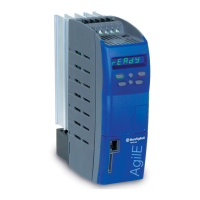Operating Instructions ACU
11.2.3 Magnetizing Current
The Rated Magnetising Current 716 is a measure of the flux in the motor and thus of the voltage
which is present at the machine in no-load condition depending on the speed. The guided
commissioning determines this value at approx. 30% of the Rated Current 371. This current can be
compared to the field current of an externally excited direct current machine.
In order to optimize the sensorless field-oriented control system, the machine must be operated
without load at a rotational frequency which is below the Rated Frequency 375. The accuracy of the
optimization increases with the adjusted Switching Frequency 400 and when the drive is in no-load
operation. The flux-forming actual current value Isd 215 to be read out should roughly match the
set Rated Magnetising Current 716.
The field-oriented control with speed sensor feedback uses the parameterized Rated Magnetising
Current 716 for the flux in the motor.
The dependence of the magnetizing on the frequency and voltage at the corresponding operating
point in question is taken into account by a magnetizing characteristic. The characteristic is
calculated via three points, in particular in the field weakening area above the rated frequency. The
parameter identification has determined the magnetizing characteristic and set the parameters
Magnetising Current 50% Flux 713, Magnetising Current 80% Flux 714 and Magnetising Current
110% Flux 715 .
Rated magnetizing current
11.2.4 Rated slip correction factor
The rotor time constant results from the inductance of the rotor circuit and the rotor resistance. Due
to the temperature-dependence of the rotor resistance and the saturation effects of the iron, the
rotor time constant is also dependent on temperature and current. The load behavior and thus the
rated slip depend on the rotor time constant. The guided commissioning determines the machine
data during the parameter identification and sets the parameter Rated Slip Correction Factor 718
accordingly. For the fine adjustment or a check of the rotor time constant, proceed as follows: Load
the machine at fifty percent of the Rated Frequency 375. As a result, the voltage must be
approximately fifty percent of the Rated Voltage 370 with a max. deviation of 5%. If this is not the
case, the correction factor must be changed accordingly. The larger the correction factor is set, the
stronger the voltage drop when the machine is loaded. The software-calculated rotor time constant
value can be read via actual value Act. Rotor Time Constant 227. The adjustment should be done at
a winding temperature which is also reached during normal operation of the motor.
Rated slip correction factor

